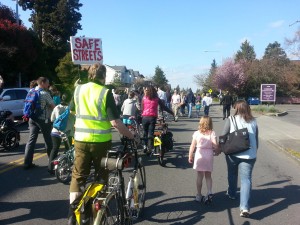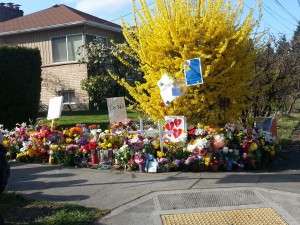Seattle’s Convention and Visitor’s Bureau has started a new campaign to deter street crime and disorder, which has been met with opposition from homeless advocates and social service organizations, and with apathy from some Seattle residents.
The new campaign called “See it, send it”, encourages people to send photos of crime, disorder, and uncomfortable situations to their city council members. As reported by the Times:
Tom Norwalk, president and CEO of the visitors bureau, in an emailed message to city and county officials, said Seattle’s visitor experience has reached a tipping point.
“The situation is getting worse, not better, and we are hearing increasing negative comments from key convention, business and leisure travel customers and clients.”
Mayor McGinn defends what the city is doing about the issue and points to growing tourism and a decline in downtown 911 calls as positive indicators. He also touts his Center City Initiative, which aims to create a vibrant and safe street environment, among other goals. Some Council members are critical of the mayor, however, and say there has not been consistent focus or follow through on the issue.
Unfortunately there isn’t consensus on the solution. Social service organizations emphasize the need for affordable housing, shelters, and treatment for drug abuse and mental illness. The visitor’s bureau wants more focus on safety patrols and enforcement of existing laws against illegal activity and aggressive panhandling, as well as outreach to individuals most in need.
Coincilmember Sally Clark posted on her blog, acknowledging the complexity of the situation.
We do have stretches of our streets and areas in our parks where crime, trash and behavior make a lot of people – including homeless people – feel less welcome and less safe. We’re not good at saying so. It makes us feel mean and less compassionate.
While some residents may dismiss the complaints about street disorder as a non-issue, or suggest that this is an issue that only affects tourists, this is an important topic for all pedestrians. Experienced urban residents may be able to ignore homelessness, begging, and drug use, or accept them as part of city life, but they do impact the pedestrian experience. It’s true that many types of public behavior are apparent in cities, and the diversity of people and activities is one of the things that makes city life interesting and appealing to many. But, based on my experience in other cities, mental illness and drug use aren’t inherently present in cities as they are in Seattle.
Recently, I had visiting relatives in town and we were enjoying a remarkable sunny weekend in October, and downtown Seattle was a vibrant and fun place to be. However, on our way walking from Pike Place Market to the waterfront, we passed someone shooting up on the sidewalk. I haven’t seen that before in Seattle, and would rather not see it again, regardless of whether I have visitors.
Pedestrian advocates may want new sidewalks to help people feel comfortable and safe while walking, but disorderly or intimidating public behavior undermines the quality of the built environment.
Many may call street disorder a “problem”, others will discern that it’s a symptom of economic issues and a limited safety net that affects people in many cities. It’s true the situation is complex, but the Visitors’ bureau calls attention to something that pedestrian advocates should be concerned about as well.






